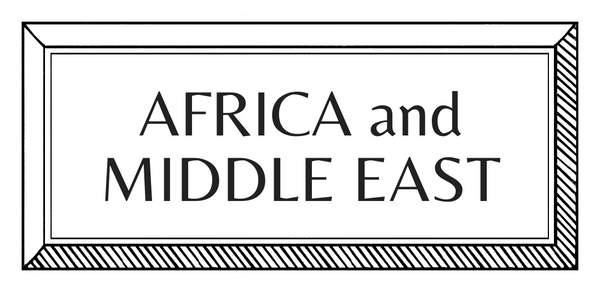MAKERS | THE AMERICAS | MEXICO | CERAMICS
Taller Manos Que Ven | Ceramicists

Taller Manos Que Ven (translated “Workshop Hands That See”) is a ceramics studio in San Antonio Castillo Velasco, Oaxaca, led by master clay artisan Maestro José García Antonio. José began sculpting as a young boy, and despite losing his vision at the age of 55, he continued his craft, demonstrating a remarkable degree of skill and imagination. Many of the studio's pots, vases, and mermaids feature the face of José's wife and muse, Maestra Santa Reyna Teresita, who contributes her own artistic prowess to the studio, along with the couple’s children.
How did you begin?
I never went to a school to learn the art—it came to me as a gift, a talent. I started as a child, playing with clay, and I found so much joy in it that it stayed with me as a trade, one that now provides my livelihood. But no teacher ever taught me their technique. I explored clay on my own and have continued discovering it to this day.
I believe it came to me naturally. I didn’t set out to make this something grand or extraordinary. No, it was simply something so fun that it became part of my life, a lesson that found me as a child and has stayed with me ever since. I’m still living it, and I have to say—this craft, this work, is something truly beautiful to me.
How did you learn?
I didn’t learn the technique from anyone. I can say that I’m a child who grew up in a village where the streets aren’t paved, where water runs and carves the earth. After the current passed, a little stream would form, and that’s where I would go to collect clay. But I never had anyone to teach me their technique. I simply took the clay and began working with it, playing and having fun with the material. That’s how I discovered the beauty of clay and how I began to shape it into the art I continue to practice today.
How do you plan, prepare and create?
It’s a beautiful process. We begin by soaking the clay in a container for three or four days. Once it’s ready, we take it out and refine it by kneading it with our feet on the ground. After it’s well-refined, we store it in materials that protect it from drying out, ensuring it stays in good condition. From there, we use the clay as needed, shaping it into what we already envision in our minds to create each piece. It’s a process that brings to life the essence of Oaxacan art.

Who or what most influences your work?
I believe my work reflects who we are as Oaxacan people, but the greatest influence comes from my wife. She is my muse. In every figure I create, I try to capture her likeness, to make each piece resemble her in some way, because she is my inspiration. Among all women, my wife holds immense value to me.
Yes, there are recurring themes. Before starting a new piece, I need to think carefully about what to create. I always consult with my wife, as we work together. Since I am visually impaired, she is my eyes, my muse, my ideal partner, and my most trusted helper. Together, we plan each sculpture—sometimes recreating pieces that have already been sold. Our goal is always the same: to fill our workshop with beautiful creations that catch the eye and bring warmth to someone’s home.
What does a typical day look like?
Our home is our workplace. It is beautiful because it’s an inheritance my wife received from her grandfather. It’s a house that measures 40 meters long by 21 meters wide, with many special spaces. Each of our children has their own workspace or studio, and I also have my own area where I work alongside my wife. That’s what makes it so special—we work together in the same place, side by side.
For me, every day is beautiful. It’s the kind of life you experience in the villages. I believe life has a certain flavor, a beautiful flavor, where there is calm, peace, and serenity—ideal for reflecting on what we’re going to do with our work and which figures are most valued. For me, both Oaxacan men and women stand out because we continue to preserve the traditional dress of our villages. We keep it alive in our own way. This is what has made us known—our way of dressing, working, and sharing. That’s how it is.

What are the best and worst things about being a craftsperson today?
In my opinion, I don’t focus on the worst aspects because we strive to create beautiful and pleasing things. We aim to capture in the clay what is beautiful about my culture, not just personally but also through representations of birds and animals. We can draw many things in the clay, and that’s what makes what we’re doing so beautiful.
What career would you be doing if you weren’t a craftsperson?
All I can say is that I don’t know what destiny holds. I believe in a supreme creator, God, who gave me this path to work in the field of art. It was a calling from the clay, and I truly feel I’ve achieved it. Despite being disabled, I feel good. To be clear: I am blind. But this disability was not the reason for me to stop doing anything.
No, I overcame this great challenge, and now we are working, leaving what I believe is a meaningful legacy for my culture and my family in this magnificent state of Oaxaca, in the heroic town of San Antonino Castillo Velasco, one of the villages in the Central Valleys of Oaxaca, the land of the god who never dies.






































